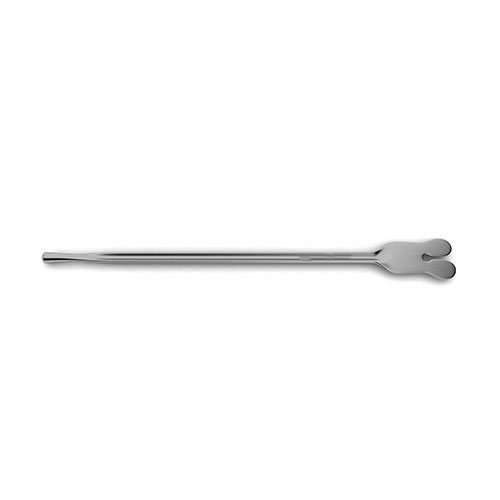Grooved Director Surgical Instrument: An Essential Tool in Precision Surgery
 Grey Medical
Grey MedicalSurgical instruments are the unsung heroes of healthcare, playing a vital role in ensuring precision, safety, and success during medical procedures. Among these, the grooved director holds a special place, often overlooked but critical in complex procedures. This instrument is designed for guiding surgical tools and creating precise incisions, making it an indispensable item in the surgeon's toolkit. Understanding the grooved director’s functionality and purpose allows us to appreciate its significance in modern medicine.

What Is a Grooved Director?
The grooved director is a slender, handheld surgical instrument with a characteristic groove running along its entire length. This groove acts as a channel to guide other instruments, such as scalpels and scissors, during surgical procedures. Typically crafted from stainless steel for durability and sterility, the grooved director is lightweight yet sturdy, a dependable tool for operating theatre environments.
The primary purpose of this tool is to provide surgeons with greater control and accuracy. By creating a clear and stable pathway for instruments to follow, the grooved director minimizes the risk of unintentional damage to surrounding tissues. Its ergonomic design, coupled with its precise functionality, ensures surgeons can focus intently on achieving excellent outcomes for their patients.
The Key Features of a Grooved Director
An integral aspect of the grooved director lies in its user-centric design. The handle is carefully crafted to allow a secure grip, reducing the likelihood of slippage during delicate procedures. The groove varies in depth and width, enabling versatility for multiple surgical applications. Some grooved directors are equipped with a probe tip at one end, designed to enhance their utility by probing into cavities or wounds.
This instrument typically ranges between 13 to 15 centimetres in length, ensuring it fits comfortably within the surgical field. Its sterile, reusable build makes it an environmentally sound and cost-effective choice in the long term.
Applications of the Grooved Director in Surgery
The grooved director has a wide range of applications, particularly in procedures where precision is paramount. Among its many uses, its role in guiding incisions is what truly sets it apart.
One of the most common applications is in the drainage of abscesses. Surgeons use the grooved director to locate and guide the incision, ensuring the affected area is targeted without compromising surrounding tissues. Similarly, it plays a crucial role in exploratory surgeries, acting as a guiding tool when cutting through delicate layers of tissue or navigating confined spaces.
Additionally, the grooved director is frequently employed in dental and maxillofacial surgeries. Its precise design ensures that procedures around sensitive areas, such as the gums or jaw, are carried out with immaculate control. It also aids in neurosurgery and orthopaedics, where accuracy can be the determining factor in postoperative recovery and outcomes.
Why Does the Grooved Director Stand Out?
The unique appeal of the grooved director lies in its simplicity and effectiveness. While modern medical advancements have introduced robotic and high-tech surgical tools, the grooved director retains its place due to its fundamental utility. Its unobtrusive design means it can adapt seamlessly to various surgical needs without complicating the process.
Another advantage is its role in enhancing precision. By minimising human error, the grooved director lends itself to safer surgical practices, ultimately improving patient outcomes. Furthermore, its durable stainless-steel construction ensures that it can withstand repeated sterilisation cycles, maintaining hygiene standards in even the most rigorous surgical settings.
Maintenance and Care of the Grooved Director
To ensure optimal performance, proper care and maintenance of the grooved director are essential. Sterilisation after every use is mandatory to prevent contamination. The instrument should be stored in a dry, secure location to maintain its structural integrity. Periodic inspections for signs of wear, such as dents or abrasions in the groove, are also recommended to uphold its reliability in surgery.
Medical facilities often include grooved directors in their standard surgical kits, underscoring the instrument's indispensable nature. Its simplicity allows for quick recognition and easy training, enabling medical teams to integrate its use efficiently into varied procedures.
Conclusions
The grooved director is a testament to the enduring value of simple yet highly effective surgical instruments. Its role in enhancing precision and minimising risk makes it an essential tool across a wide range of surgical disciplines. While it may not share the spotlight with cutting-edge medical technologies, the grooved director continues to be a quiet but crucial contributor to the success of countless surgical procedures.
Surgeons trust the grooved director not only for its functional benefits but also for its ease of integration into diverse medical contexts. Its unassuming design masks its utility, proving that even the simplest tools can play a pivotal role in modern healthcare. By ensuring proper care and maintenance, healthcare professionals can continue to rely on this timeless instrument to deliver the highest standards of surgical precision.
Subscribe to my newsletter
Read articles from Grey Medical directly inside your inbox. Subscribe to the newsletter, and don't miss out.
Written by
